We’re really pleased to have Lawrence Dudley writing for us.
Digital-Lifestyles thinks that all too often articles about teenagers are written by people old enough to be their parents. What teenagers are thinking isn’t represented.
Lawrence will give you a point of view that you won’t find in other publications. You see Lawrence _is_ a teenager.
 There’s a Trust Issue Here
There’s a Trust Issue Here
With the Digital world coming ever closer to reality, there is a danger of the two merging. The upshot of this is a danger that people become so involved with the Digital world, that they lose a grasp of reality. In short, they become addicted.
Internet addiction disorder is already a widely recognised addiction and those most likely to become addicted to the Internet are teenagers. This is partly because of the anonymity and therefore reputation-less nature of the Internet, allowing them to be whoever they want to be, and partly because teens just have so much more time on their hands than their grown-up counterparts. This together, results in a vast amount of Internet use.
What can responsible parents do when their teenager refuses to turn off the computer or refuses to go to school because they’ve been up too late playing online?
There are two approaches: The first is to talk to the child in question about the problem. While this will work with the majority of responsible teenagers, there will always be a minority who won’t listen. The other approach is using parental control software which can do a variety of things including limit the amount of time that a user is allowed to spend on the Internet. Trouble with any sort of software solution is, of course, that it can easily hacked or broken. Very often the teenager has a much better knowledge of the computer than the parent has.
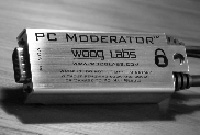 A company called Woog Labs (yes, really) have unveiled a product that is designed to be hack-proof and will apparently work for any operating system.
A company called Woog Labs (yes, really) have unveiled a product that is designed to be hack-proof and will apparently work for any operating system.
Trouble with it is that A) It requires an adaptor to be used with any video cable other than VGA (mine’s DVI), and B) It only works with PS/2 Keyboards… PS/2?!
This makes their claim that it works with any operating system a bit hard to swallow: I’m sure that theoretically, this device will work on Mac OS X. However, to my knowledge there has NEVER been a Mac shipped with a PS/2 port. Makes it a bit useless really…
I can see that there is probably a market for a device like this, but what’s really needed is for someone to educate parents on their responsibilities. Surely it should be up to the parents to teach the kids what’s right and what’s wrong? If they don’t, then what are the kids going to do when they grow older? When they are forced to look after themselves? Digital nannying should only go so far in my opinion.
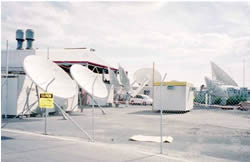 It’s not cheap to launch a satellite and, as commercial satellite operators have become prey to acquisition over the last 2 years, this has been followed by the operators consolidating. The economics of satellite distribution have fundamentally changed in the USA and Western Europe. Expect competition to be fierce in what was until recently a comfortable cartel carved out the International Telecoms Union (ITU) with constituent members many years ago.
It’s not cheap to launch a satellite and, as commercial satellite operators have become prey to acquisition over the last 2 years, this has been followed by the operators consolidating. The economics of satellite distribution have fundamentally changed in the USA and Western Europe. Expect competition to be fierce in what was until recently a comfortable cartel carved out the International Telecoms Union (ITU) with constituent members many years ago. Telecommunications companies like France Telecom are increasingly selling off underused teleport facilities – they’re those places with loads of big satellite dishes pointing towards the heavens. These are being bought by satellite operators so they can offer an integrated end-to-end solution to their customers.
Telecommunications companies like France Telecom are increasingly selling off underused teleport facilities – they’re those places with loads of big satellite dishes pointing towards the heavens. These are being bought by satellite operators so they can offer an integrated end-to-end solution to their customers. The $100 laptop project launched by MIT Media Lab, gained a big boost yesterday when the labs Nicholas Negroponte met with UN Secretary-General Kofi Annan at the World Summit on the Information Society in Tunisia.
The $100 laptop project launched by MIT Media Lab, gained a big boost yesterday when the labs Nicholas Negroponte met with UN Secretary-General Kofi Annan at the World Summit on the Information Society in Tunisia.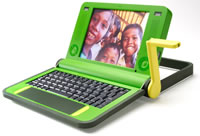 “USB ports galore” will be provided as will built-in WiFi. The only thing it will be missing is a hard drive. We’d imagine that this will be down to the additional power drain they have, and to try and maintain the necessary ruggedness. The networking will be via a wireless mesh.
“USB ports galore” will be provided as will built-in WiFi. The only thing it will be missing is a hard drive. We’d imagine that this will be down to the additional power drain they have, and to try and maintain the necessary ruggedness. The networking will be via a wireless mesh.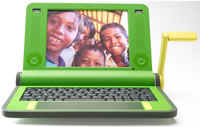 All software will be open source as in Negroponte view “open source software is the key to innovation in software and learning technology.”
All software will be open source as in Negroponte view “open source software is the key to innovation in software and learning technology.” The impact of this project could be huge on many fronts – if it comes into being – and we’ve no reason to imagine that it won’t. Giving any and every child access to a computer, and teaching them to use it and inspiring them will be the start of a revolution bring free communication and equal learning to all citizens.
The impact of this project could be huge on many fronts – if it comes into being – and we’ve no reason to imagine that it won’t. Giving any and every child access to a computer, and teaching them to use it and inspiring them will be the start of a revolution bring free communication and equal learning to all citizens. Ofcom estimates that the digital switchover programme will release up to 112 MHz of spectrum in the UHF (Ultra High Frequency) band for new uses. The UHF band is prime spectrum, because it offers a technically valuable combination of capacity (bandwidth) and range.
Ofcom estimates that the digital switchover programme will release up to 112 MHz of spectrum in the UHF (Ultra High Frequency) band for new uses. The UHF band is prime spectrum, because it offers a technically valuable combination of capacity (bandwidth) and range. It also provides practical guidance on how to use search effectively but safely, for example, by monitoring or filtering your search results.
It also provides practical guidance on how to use search effectively but safely, for example, by monitoring or filtering your search results. One of our Digital-Lifestyles favorite digital media entrepreneur Swede, Jens Nylander has extracted himself from recent problems and brought out a new mp3 player called MP-X.
One of our Digital-Lifestyles favorite digital media entrepreneur Swede, Jens Nylander has extracted himself from recent problems and brought out a new mp3 player called MP-X.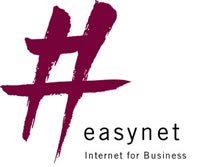 Yesterday, Sky’s takeover of Easynet was finalised and it looks to many that, despite paying a premium on the share price, they’ve have quite a bargain on their hands.
Yesterday, Sky’s takeover of Easynet was finalised and it looks to many that, despite paying a premium on the share price, they’ve have quite a bargain on their hands. Although reports that broadband is the latest media battleground have highlighted the moves by the UK telcos, the ultimate prize is the fabled home digital information gateway. The opportunities that this acquisition enables go beyond a mere triple play option (Inernet, TV & Telephone), allowing Sky to, begin by become the overriding aggregator of TV content and, in time, become the preferred digital gatekeeper for many UK homes.
Although reports that broadband is the latest media battleground have highlighted the moves by the UK telcos, the ultimate prize is the fabled home digital information gateway. The opportunities that this acquisition enables go beyond a mere triple play option (Inernet, TV & Telephone), allowing Sky to, begin by become the overriding aggregator of TV content and, in time, become the preferred digital gatekeeper for many UK homes. Submissions should give the name and postal address of the person sending the memorandum and should state whether it has been prepared specifically for the Committee. If the memorandum is from an organisation rather than an individual, it should briefly explain the nature and membership of the organisation. The Committee may publish some of the submissions it receives.
Submissions should give the name and postal address of the person sending the memorandum and should state whether it has been prepared specifically for the Committee. If the memorandum is from an organisation rather than an individual, it should briefly explain the nature and membership of the organisation. The Committee may publish some of the submissions it receives.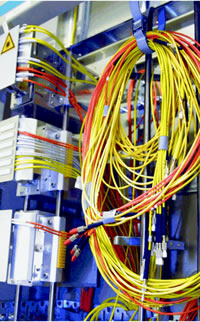 The rollout of ADSL2+ in the UK appears to be going through a reverse-hype process, with people saying it’s not going to deliver high speeds to most people. That may be partially true, but in urban areas where people are within 1.5Km of the exchange they should get 20Mb/s+.
The rollout of ADSL2+ in the UK appears to be going through a reverse-hype process, with people saying it’s not going to deliver high speeds to most people. That may be partially true, but in urban areas where people are within 1.5Km of the exchange they should get 20Mb/s+.